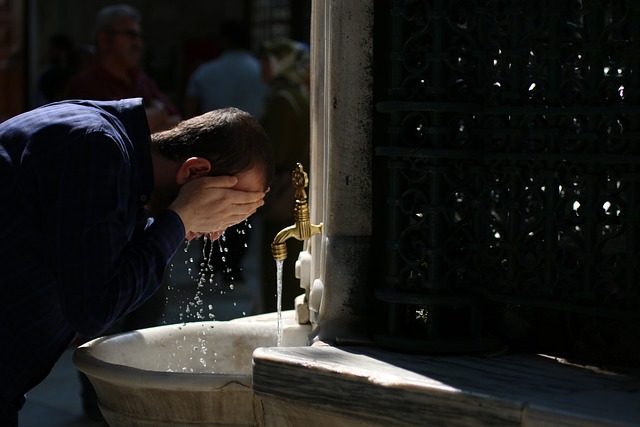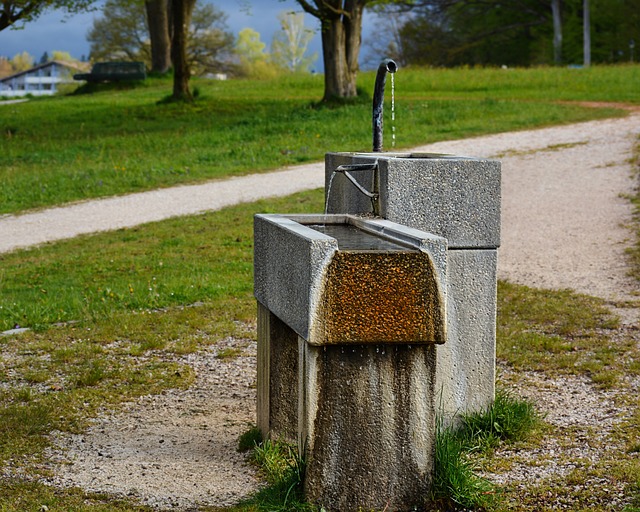Built during the reign of Sultan Abdulhamid II, this fountain is a beautiful example of classical Islamic architecture. Its intricate designs and elegant lines draw you in, almost like a siren’s call. The ornate tile work and delicate calligraphy are not just decorations; they tell stories of a time when artistry and functionality danced hand in hand. Can you picture the locals gathering here, filling their water jugs while exchanging stories? It’s a slice of life that feels timeless.
As you stand before the Hamidiye Sebili, take a moment to appreciate the craftsmanship. The fountain isn’t just a place to quench your thirst; it’s a symbol of hospitality, a tradition that dates back centuries. Just like a warm cup of tea shared among friends, this fountain invites everyone to pause and reflect.
Hamidiye Sebili: A Glimpse into Ottoman Elegance in the Heart of Sultanahmet

As you stroll through the bustling streets of Sultanahmet, the Hamidiye Sebili stands out, inviting you to pause and soak in its beauty. Picture intricate tile work that glimmers in the sunlight, each piece meticulously placed to create a mosaic of colors that would make any artist envious. The fountain itself, with its flowing water, offers a refreshing escape from the city’s hustle and bustle. It’s like nature’s own symphony, playing a soothing melody that beckons you to sit and reflect.
But what truly sets the Hamidiye Sebili apart is its rich history. Commissioned by Sultan Abdulhamid II, this fountain was more than just a source of water; it was a symbol of generosity. Imagine the countless travelers and locals who quenched their thirst here, sharing stories and laughter, all while surrounded by the grandeur of Ottoman design. It’s a slice of history that connects the past with the present, reminding us of the importance of community and hospitality.
Visiting the Hamidiye Sebili is like stepping into a time machine, where you can almost hear the echoes of the past. So, next time you find yourself wandering through Sultanahmet, don’t just rush by. Take a moment to appreciate this architectural marvel, and let it transport you to a time of elegance and grace.
Discovering Hamidiye Sebili: The Timeless Beauty of Ottoman Public Fountains
The Hamidiye Sebili, built during the reign of Sultan Abdulhamid II, is more than just a source of water; it’s a symbol of community and hospitality. Back in the day, these fountains were the lifeblood of the city, providing refreshment to weary travelers and locals alike. Can you imagine the bustling streets filled with people, all gathering around this beautiful structure, sharing stories and laughter? It’s like stepping into a living painting, where every detail tells a story.
What makes the Hamidiye Sebili truly special is its design. The ornate carvings and vibrant tiles are a feast for the eyes, reminiscent of a kaleidoscope of colors. Each element is meticulously crafted, showcasing the artistry of the Ottoman era. It’s as if the fountain itself is a storyteller, revealing the rich cultural tapestry of its time.
Sultanahmet’s Hidden Gem: The Architectural Marvel of Hamidiye Sebili
As you approach, the first thing that catches your eye is the exquisite tile work. The vibrant colors and detailed patterns are reminiscent of a painter’s palette, each tile a brushstroke in a grand masterpiece. It’s as if the walls are whispering tales of the past, inviting you to pause and appreciate the beauty that surrounds you. Have you ever felt that rush of excitement when you uncover something extraordinary? That’s exactly what Hamidiye Sebili offers.
But it’s not just about the visuals. The fountain served a practical purpose, providing fresh drinking water to the public. Picture the locals gathering around, sharing stories and laughter, all while sipping from this beautifully designed fountain. It’s a slice of life that connects the past to the present, reminding us of the simple joys of community.
From Water to Wonder: The Historical Significance of Hamidiye Sebili in Istanbul

Picture this: back in the day, when the sun blazed down on the city, the Hamidiye Sebili served as a refreshing oasis for weary travelers and locals alike. It was more than just a source of water; it was a symbol of hospitality. Just like a warm cup of tea shared among friends, this fountain offered a moment of respite in a bustling world. The intricate designs and ornate architecture reflect the artistic flair of the Ottoman Empire, making it a visual feast for anyone who stops to admire it.

But why is the Hamidiye Sebili so significant? Well, it represents a shift in how public spaces were viewed. Instead of just being functional, they became places of beauty and community. Imagine a time when access to clean water was a luxury, and here was a fountain that welcomed everyone, regardless of their background. It’s like finding a cozy café in a crowded city where everyone is invited to sit and share stories.
Hamidiye Sebili: Where Classical Islamic Architecture Meets Modern-Day Istanbul
As you approach the Hamidiye Sebili, you can’t help but admire its ornate façade, adorned with delicate calligraphy and geometric patterns that seem to dance in the sunlight. It’s a visual feast that invites you to pause and appreciate the craftsmanship that has stood the test of time. Have you ever wondered how such artistry can evoke a sense of peace amidst the chaos of city life? That’s the magic of this place.
Once you step inside, the cool air and tranquil atmosphere wrap around you like a comforting embrace. The sebil, or public fountain, was designed not just for beauty but also for community. Picture locals gathering here, sharing stories and laughter over a refreshing sip of water. It’s a reminder of how architecture can foster connection, bridging the gap between the past and the present.
Frequently Asked Questions
What role did Hamidiye Sebili play in Ottoman society?
Hamidiye Sebili served as a public fountain in Ottoman society, providing free access to water for the community. It symbolized the state’s commitment to public welfare and hygiene, reflecting the importance of water distribution in urban life. These structures were often adorned with architectural beauty, enhancing the cultural landscape while promoting social interaction and community well-being.
Are there any notable events or activities near Hamidiye Sebili?
Explore a variety of cultural and recreational activities near Hamidiye Sebili, including local festivals, historical tours, and outdoor events. Visitors can enjoy guided walks, art exhibitions, and community gatherings that showcase the rich heritage and vibrant atmosphere of the area.
How can I visit Hamidiye Sebili and its surrounding landmarks?
To visit Hamidiye Sebili and its surrounding landmarks, start by planning your trip to the location, which is accessible via public transport or by car. Research the opening hours and any entry requirements for the Sebili and nearby sites. Consider guided tours for a comprehensive experience, and check local maps for the best routes to explore the area efficiently. Don’t forget to check for any special events or exhibitions that may enhance your visit.
What is the history of Hamidiye Sebili in Sultanahmet?
The Hamidiye Sebili, located in Sultanahmet, was built in the late 19th century during the reign of Sultan Abdulhamid II. It served as a public fountain providing free water to the people, reflecting the Ottoman Empire’s commitment to public welfare. The structure is notable for its architectural design, featuring intricate tile work and a blend of neo-classical and Ottoman styles, symbolizing the era’s cultural richness.
What architectural features define Hamidiye Sebili?
Hamidiye Sebili is characterized by its ornate design, featuring intricate tile work, elegant arches, and decorative motifs. The structure typically includes a central fountain, surrounded by a spacious area for public use, reflecting the architectural style of the late Ottoman period. Its aesthetic elements serve both functional and decorative purposes, embodying the cultural significance of public water sources.

